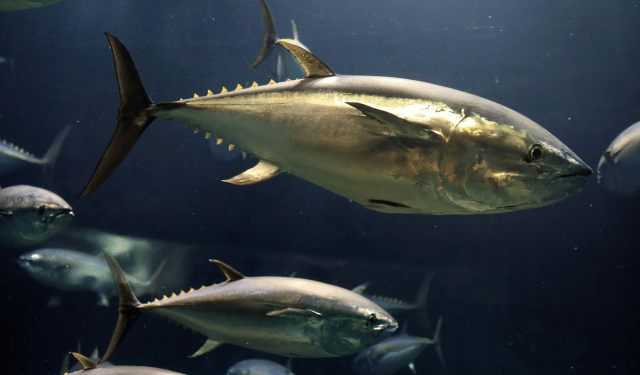State of the tuna fishery in 2025. Global figures from the new ISSF report – In the fishing world, tuna remains the undisputed protagonist. Appreciated on tables all over the planet, it is at the heart of an industry that generated 5.2 million tonnes of catch in 2023. But how sustainable is all this? Answering this question with scientific rigour is the International Seafood Sustainability Foundation (ISSF), which has recently published the new reportStatus of the World Fisheries for Tuna – March 2025, one of the world’s most authoritative documents for monitoring the health of tuna stocks.
The report analyses 23 global stocks belonging to seven major commercial species: albacore, bigeye, bluefin, skipjack and yellowfin. Each stock is assessed according to two key parameters: spawning biomass abundance and fishing mortality, providing a clear and comparable view of the state of the resource.
The 2025 results show a mixed picture. 65% of the stocks are in a healthy state of abundance, while 9% are overfished and the remaining 26% are in an intermediate zone. On the fishing effort side, 91% of stocks are not overfished, but critical situations remain, particularly for some bigeye and bluefin populations. The good news is that 87 per cent of global catches come from stocks considered healthy. This is largely due to the dominance of skipjack tuna, which alone accounts for 57 per cent of catches and enjoys good health wherever it is caught.
One of the most innovative aspects of the ISSF report is the methodological approach. Each stock is analysed using a colour-coded evaluation system (green, yellow, orange) that makes the state of the resource and the effectiveness of the management measures adopted by the Regional Fisheries Management Organisations (RFMOs) immediately legible. The five international RFMOs – ICCAT, IOTC, WCPFC, IATTC and CCSBT – have the task of monitoring and regulating tuna fishing in the different oceans, but with uneven results. While there has been an improvement in some areas, uncertainties and management shortcomings remain elsewhere.
The paper also stresses the growing importance of the precautionary approach, with the adoption of catch strategies based on Harvest Control Rules and increasingly sophisticated scientific assessment systems. However, the ISSF warns that increased catches from FADs (Fish Aggregating Devices) and the depletion of some stocks indicate the need to strengthen monitoring and mitigation measures.
Finally, it should be noted that, to ensure consistency and reliability of information, the report was compiled by the ISSF’s scientific team and reviewed by its Scientific Advisory Committee, making it a key tool for policymakers, industry stakeholders and supply chain organisations.
For those working in the fishing industry, this report is not just an up-to-date snapshot, but a real compass. An essential reading for those who want to combine business and sustainability, aware that the future of tuna – and of fishing itself – is at stake today, among scientific data, effective rules and responsible choices.
State of tuna fishing in 2025. Global data from the new ISSF report









